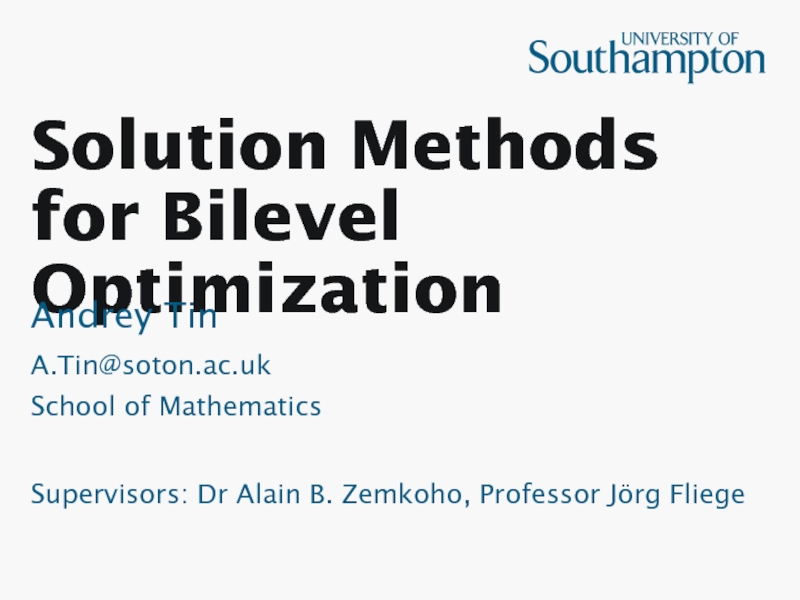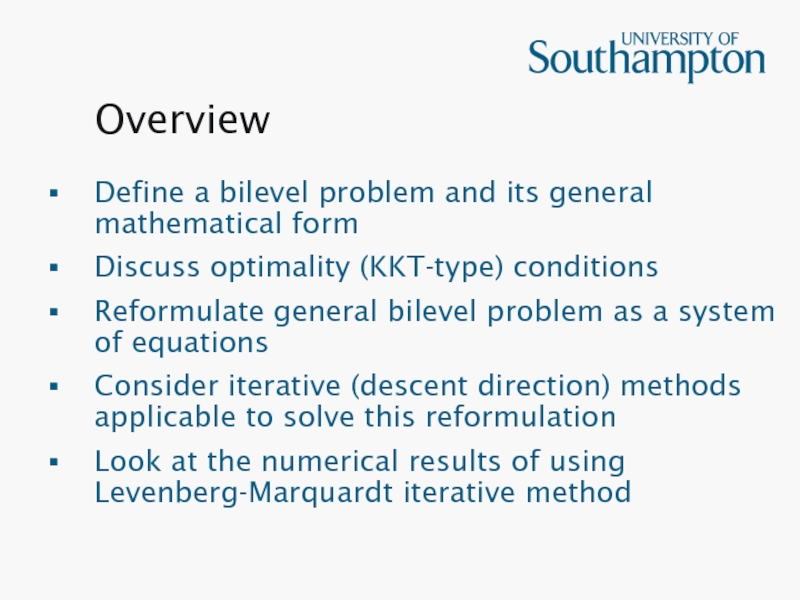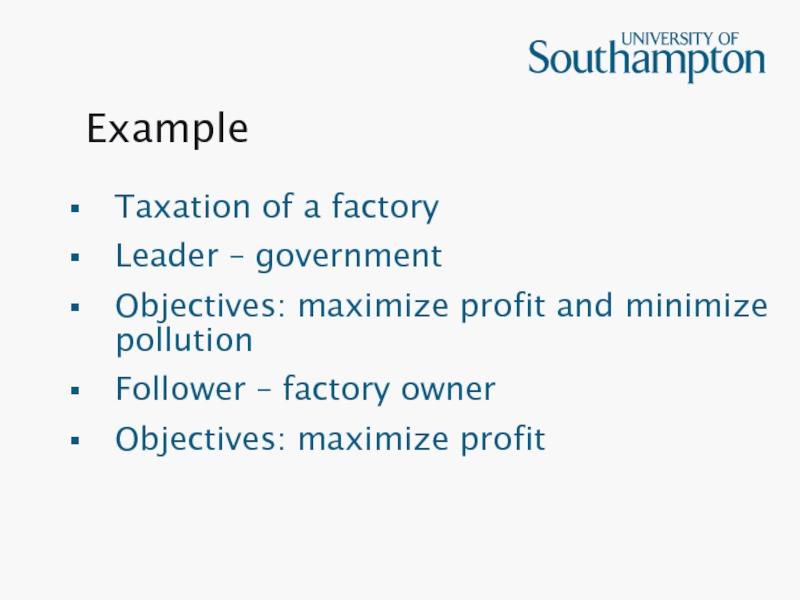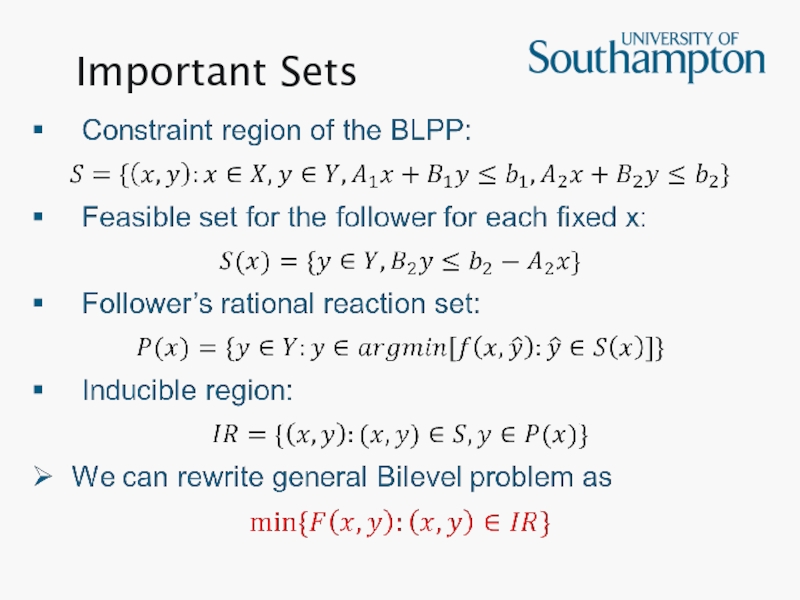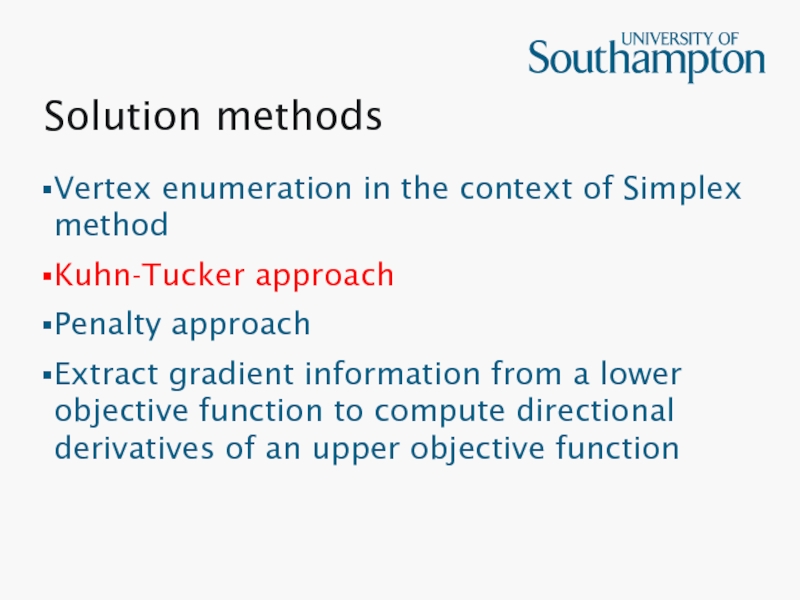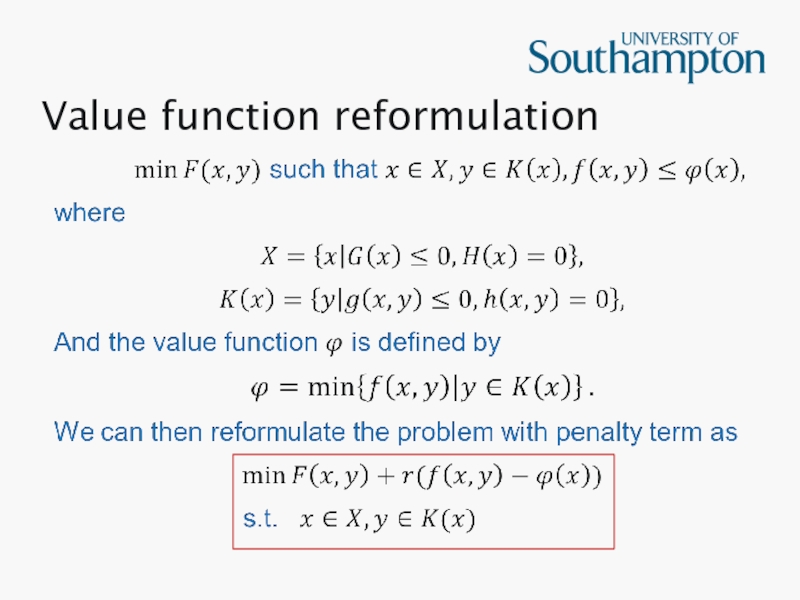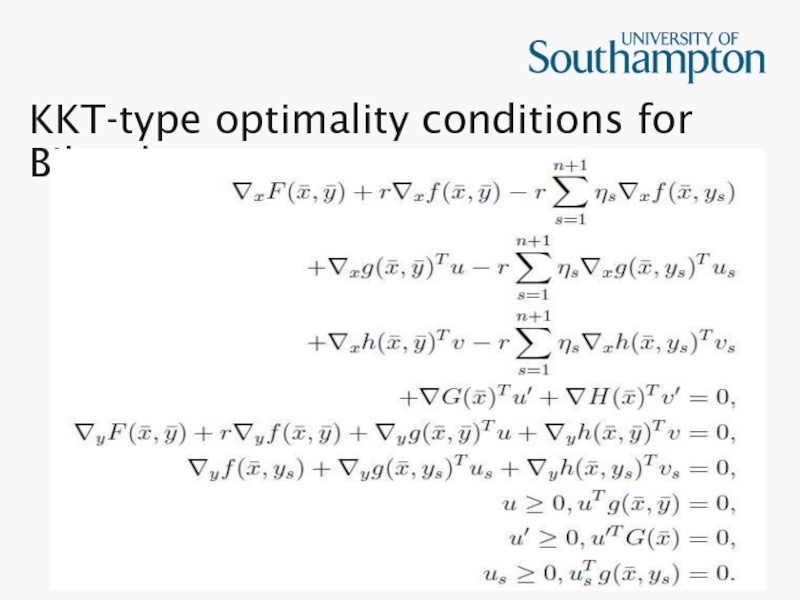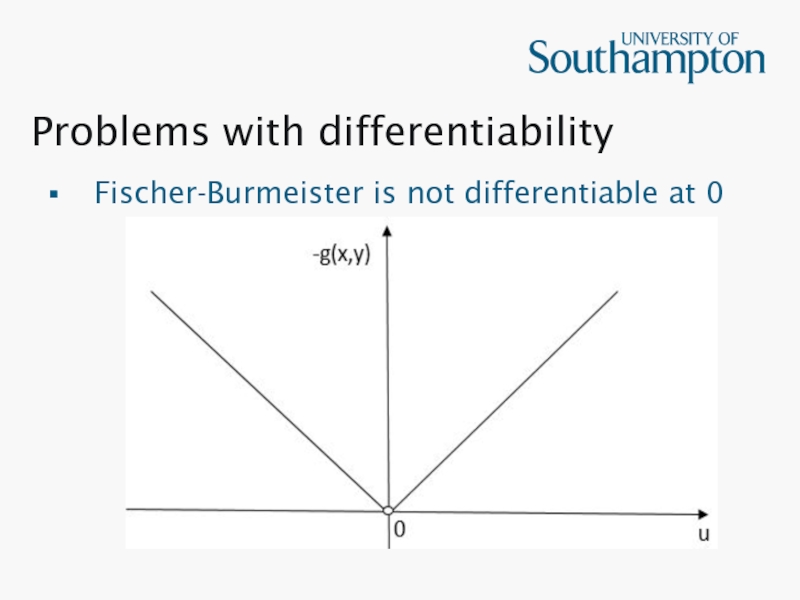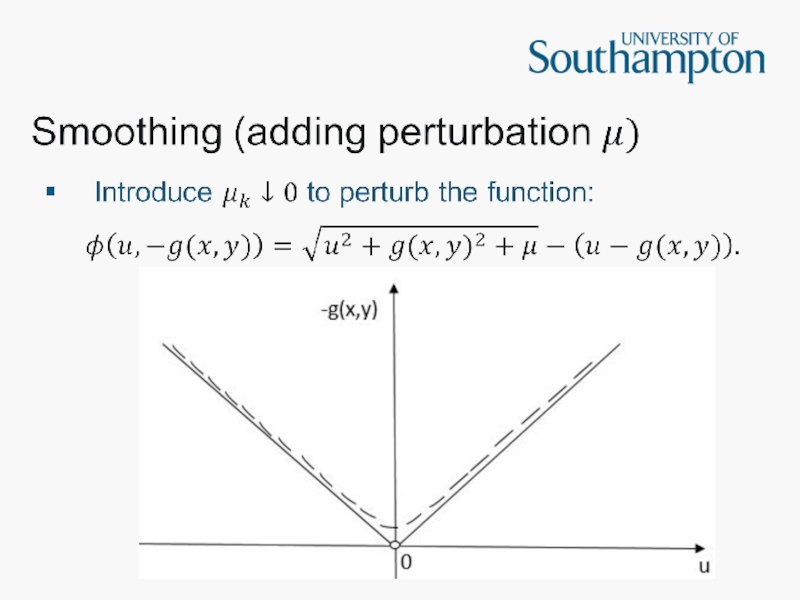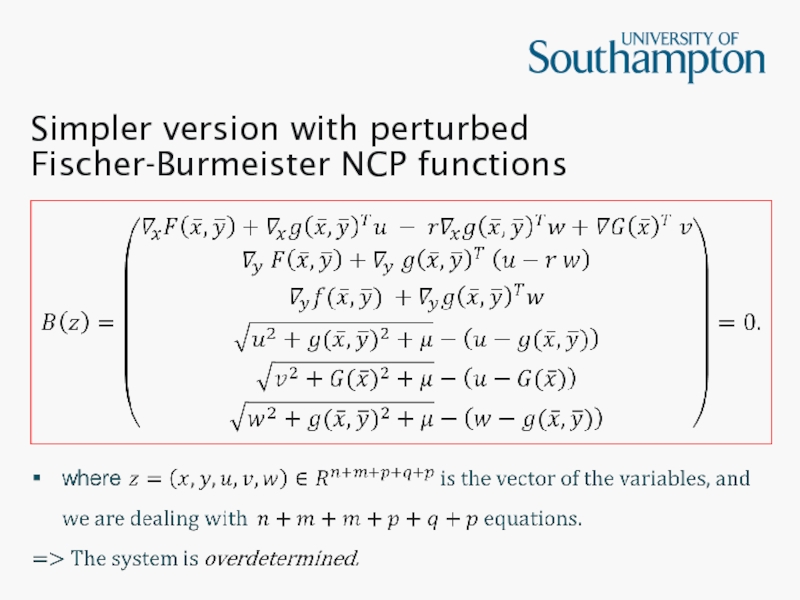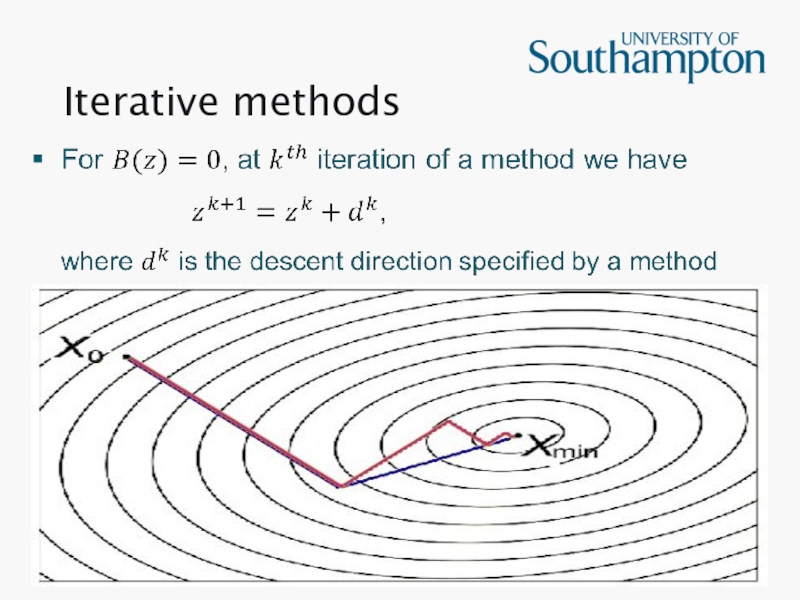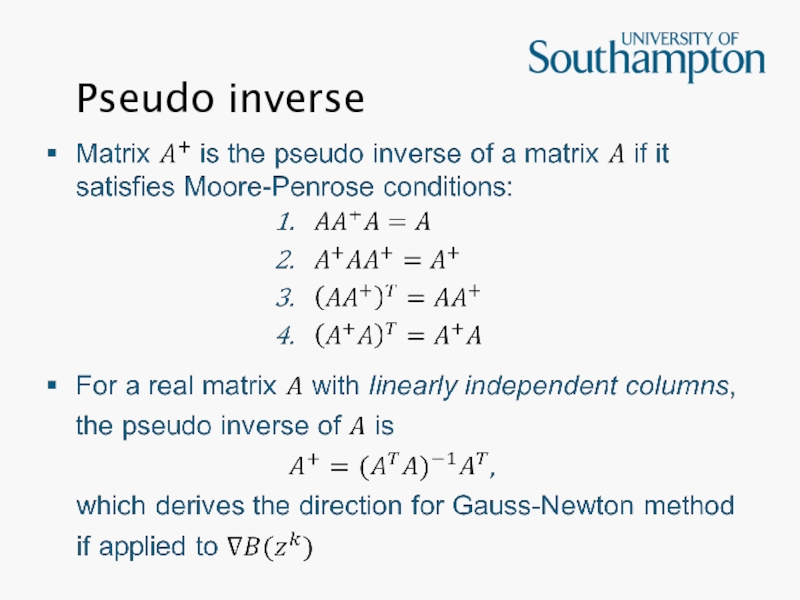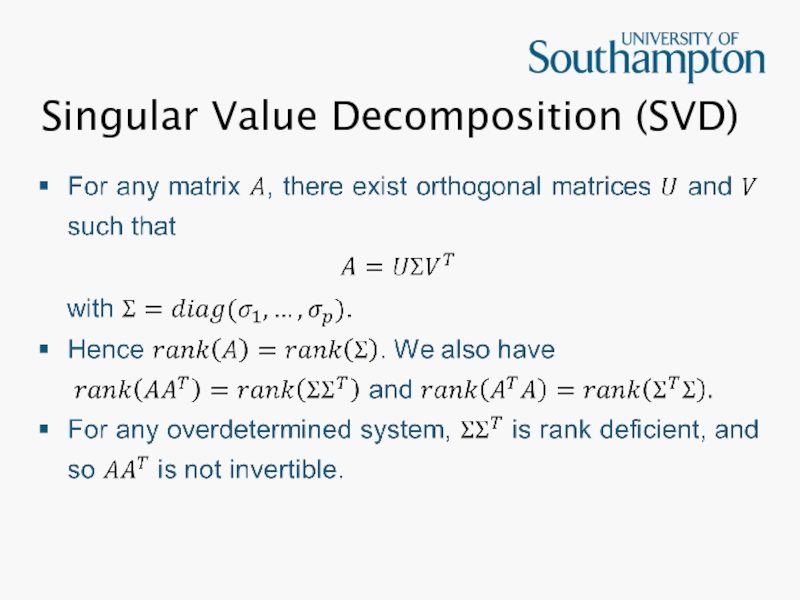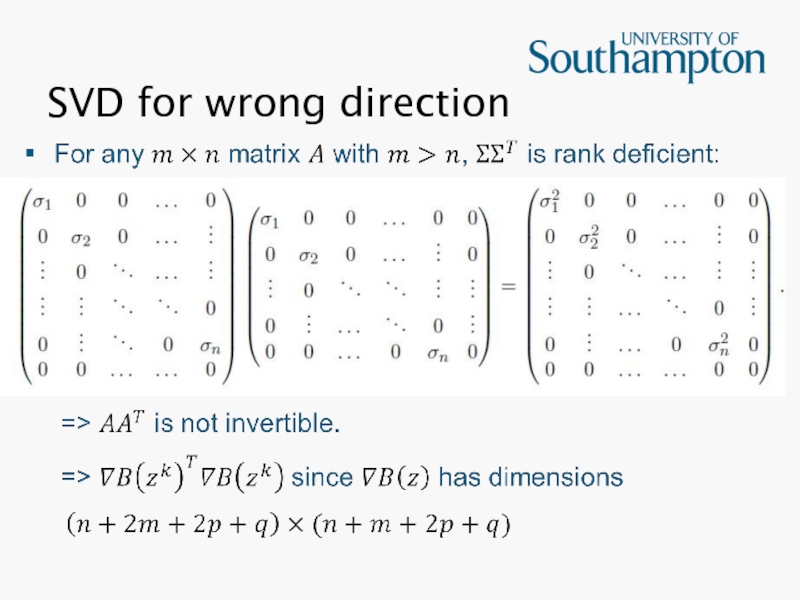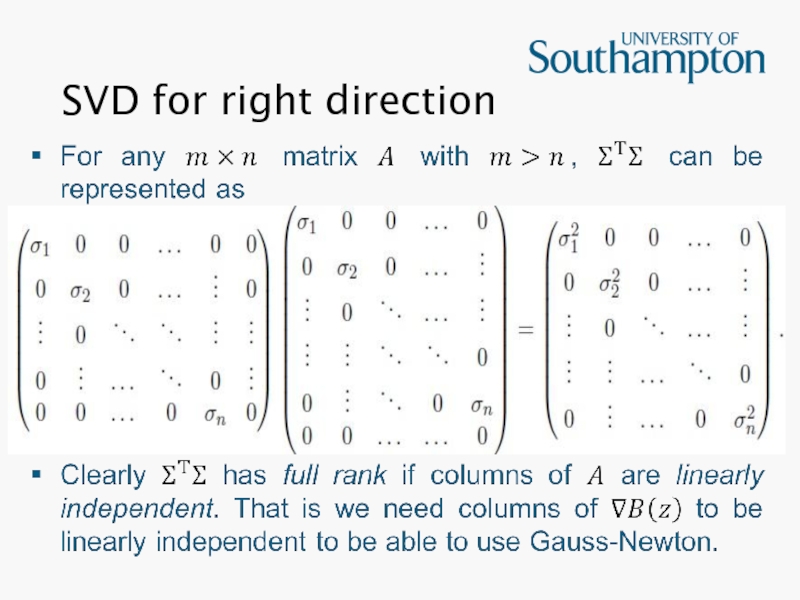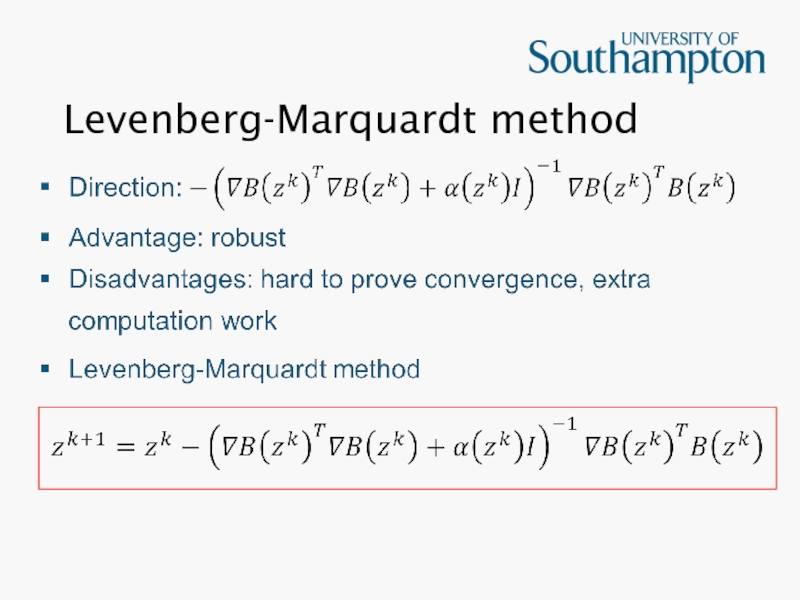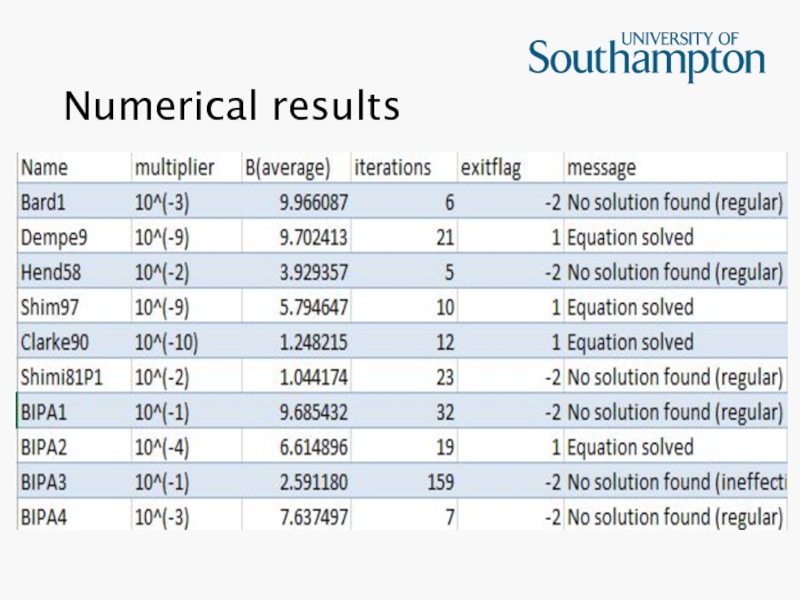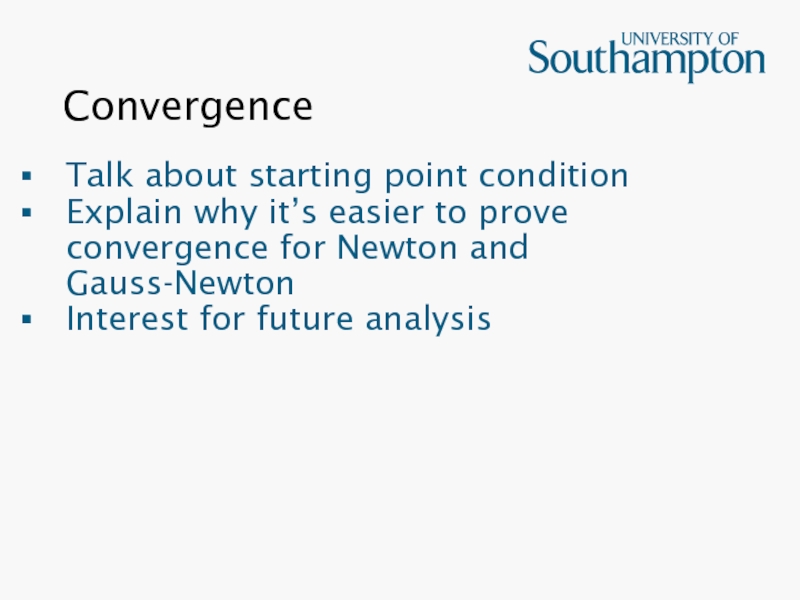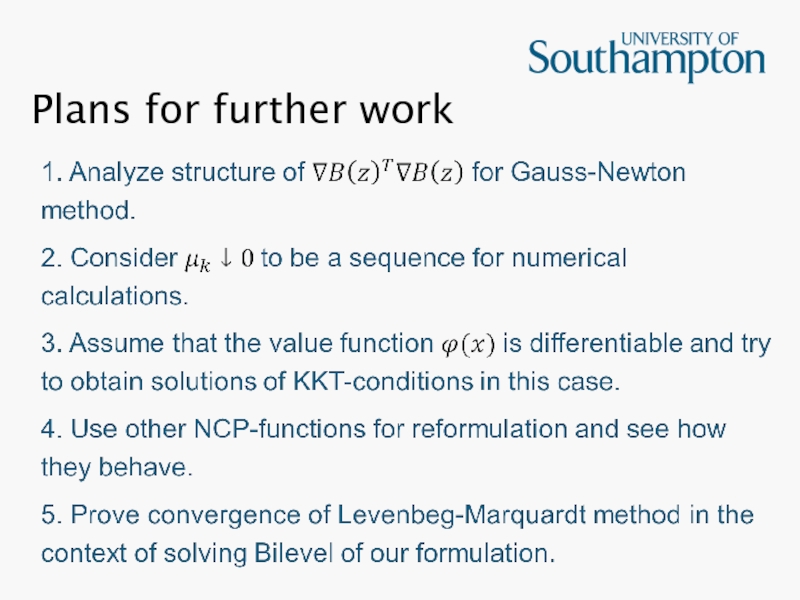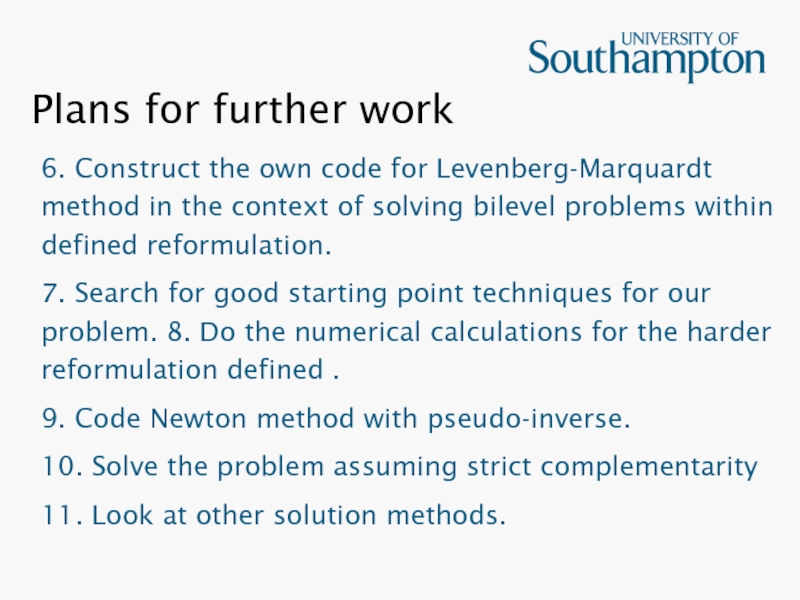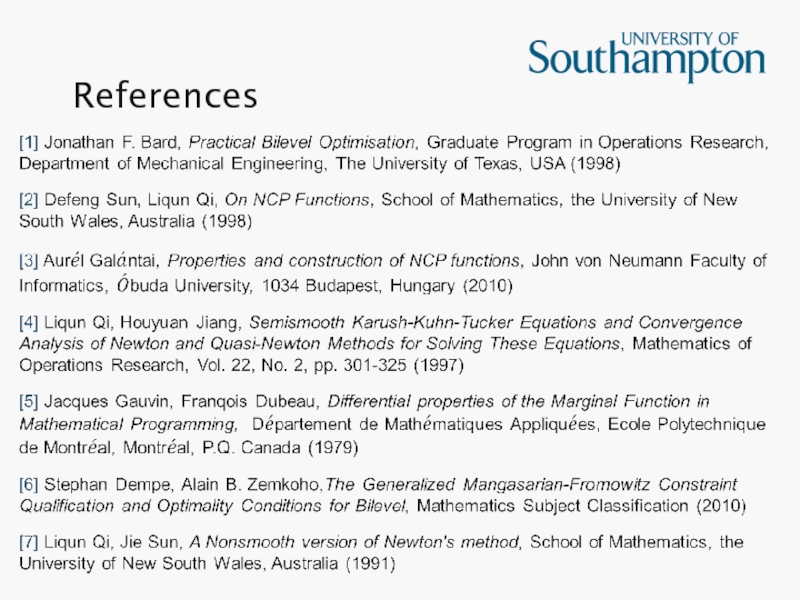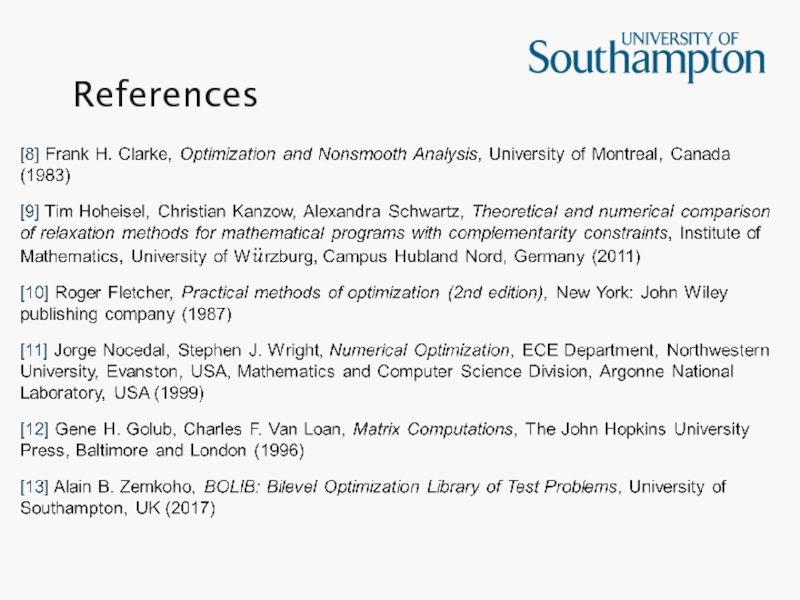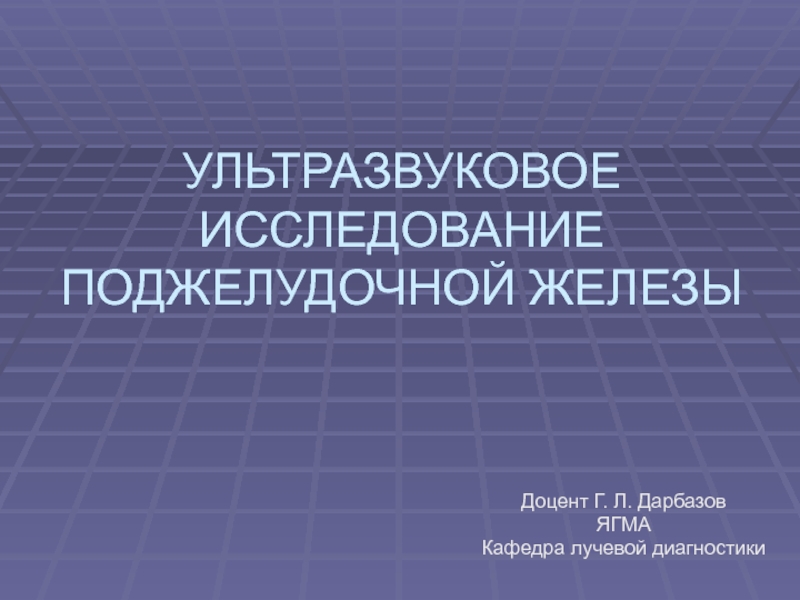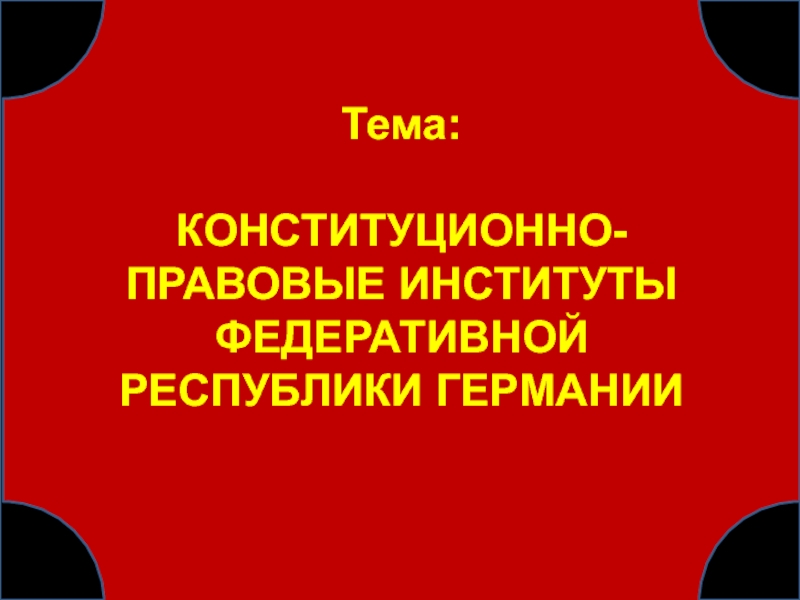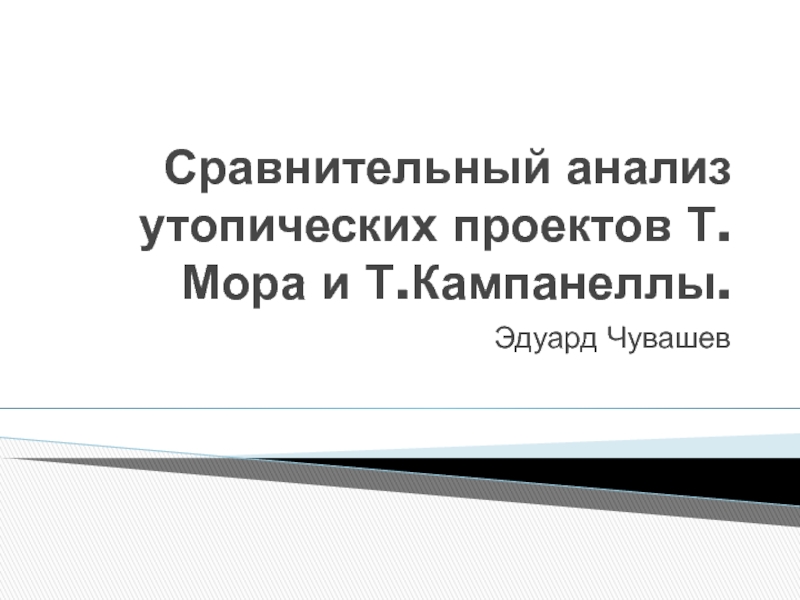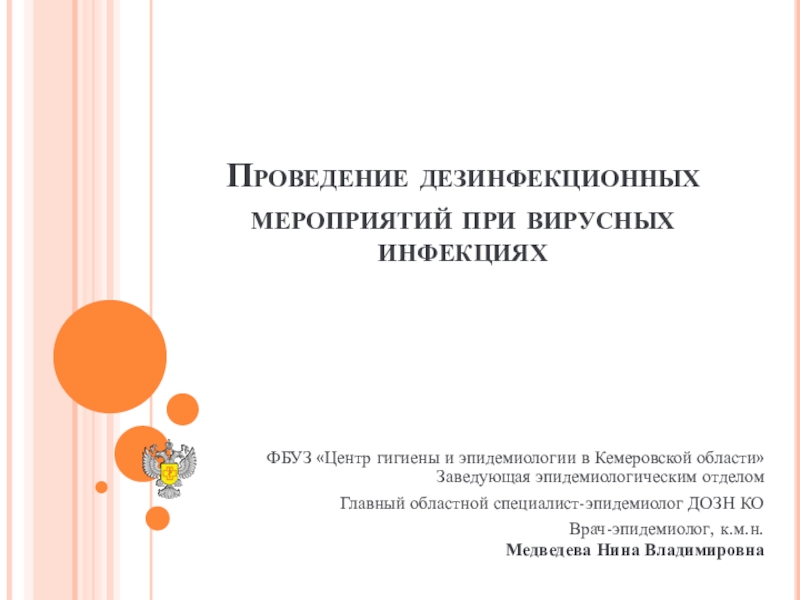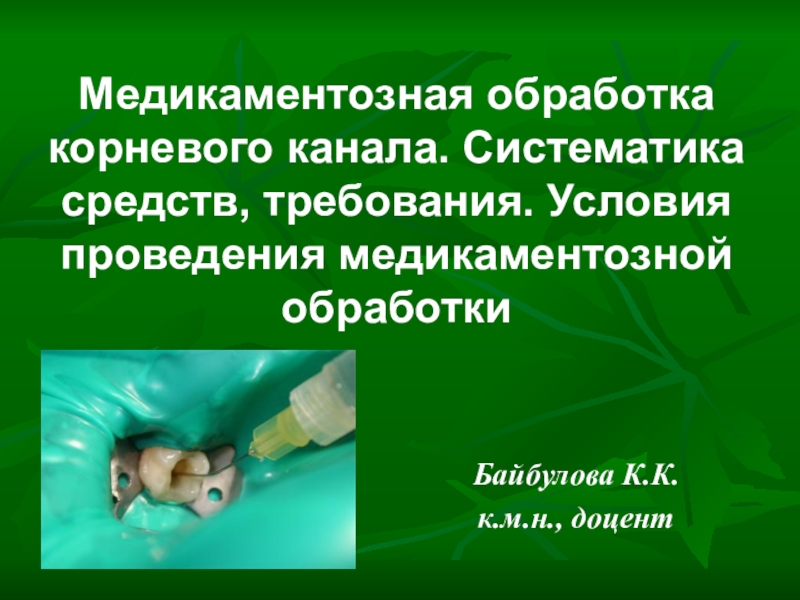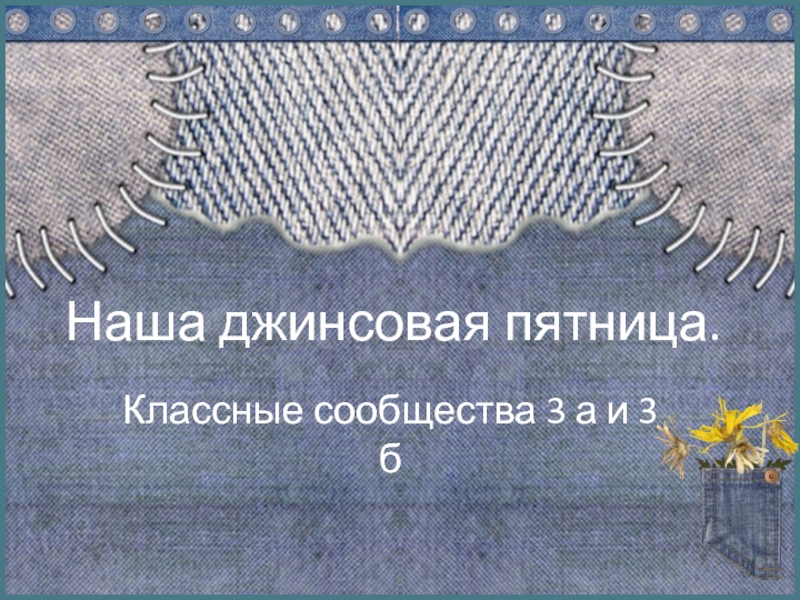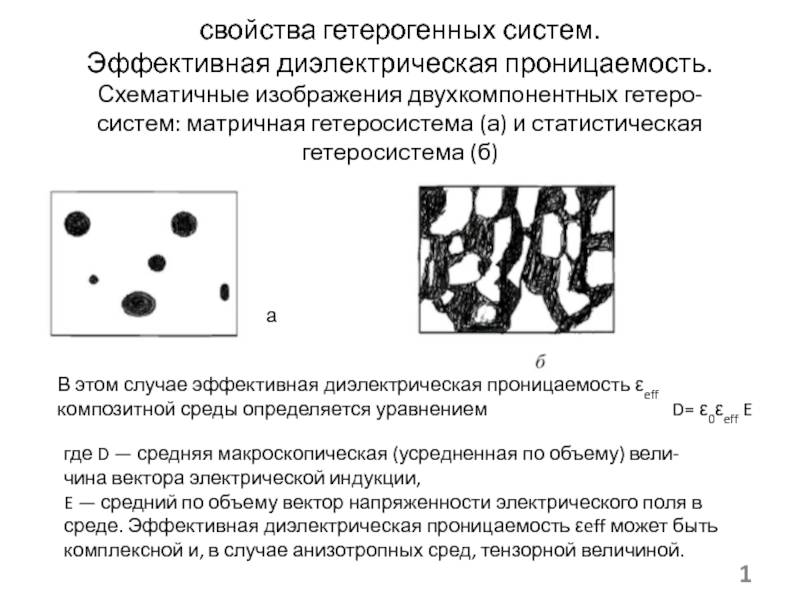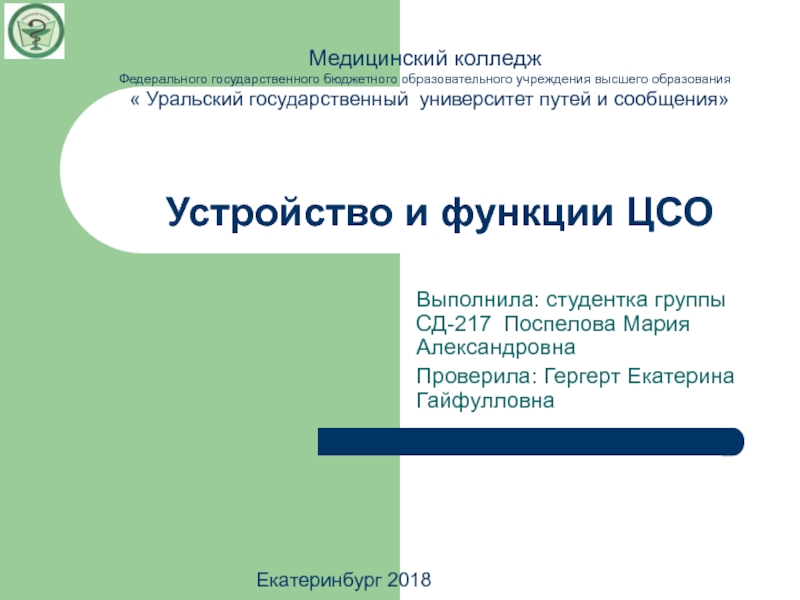Разделы презентаций
- Разное
- Английский язык
- Астрономия
- Алгебра
- Биология
- География
- Геометрия
- Детские презентации
- Информатика
- История
- Литература
- Математика
- Медицина
- Менеджмент
- Музыка
- МХК
- Немецкий язык
- ОБЖ
- Обществознание
- Окружающий мир
- Педагогика
- Русский язык
- Технология
- Физика
- Философия
- Химия
- Шаблоны, картинки для презентаций
- Экология
- Экономика
- Юриспруденция
Solution Methods for Bilevel Optimization
Содержание
- 1. Solution Methods for Bilevel Optimization
- 2. OverviewDefine a bilevel problem and its general
- 3. Stackelberg Game (Bilevel problem)Players: the Leader and
- 4. ExampleTaxation of a factoryLeader – governmentObjectives: maximize profit and minimize pollutionFollower – factory ownerObjectives: maximize profit
- 5. General structure of a Bilevel problem
- 6. Important Sets
- 7. Solution methodsVertex enumeration in the context of
- 8. Concept of KKT conditions
- 9. Value function reformulation
- 10. KKT for value function reformulation
- 11. Assumptions
- 12. KKT-type optimality conditions for Bilevel
- 13. Further Assumptions (for simpler version)
- 14. Simpler version of KKT-type conditions
- 15. NCP-Functions
- 16. Problems with differentiabilityFischer-Burmeister is not differentiable at 0
- 17.
- 18. Simpler version with perturbed Fischer-Burmeister NCP functions
- 19. Iterative methods
- 20. Newton method
- 21. Pseudo inverse
- 22. Gauss-Newton method
- 23. Singular Value Decomposition (SVD)
- 24. SVD for wrong direction
- 25. SVD for right direction
- 26. Levenberg-Marquardt method
- 27. Numerical results
- 28. ConvergenceTalk about starting point conditionExplain why it’s
- 29. Plans for further work
- 30. Plans for further work6. Construct the own
- 31. Thank you!
- 32. References
- 33. References
- 34. Скачать презентанцию
OverviewDefine a bilevel problem and its general mathematical formDiscuss optimality (KKT-type) conditionsReformulate general bilevel problem as a system of equationsConsider iterative (descent direction) methods applicable to solve this reformulationLook at the
Слайды и текст этой презентации
Слайд 1Solution Methods for Bilevel Optimization
Andrey Tin
A.Tin@soton.ac.uk
School of Mathematics
Supervisors: Dr Alain
B. Zemkoho, Professor Jörg Fliege
Слайд 2Overview
Define a bilevel problem and its general mathematical form
Discuss optimality
(KKT-type) conditions
Reformulate general bilevel problem as a system of equations
Consider
iterative (descent direction) methods applicable to solve this reformulationLook at the numerical results of using Levenberg-Marquardt iterative method
Слайд 3Stackelberg Game (Bilevel problem)
Players: the Leader and the Follower
The Leader
is first to make a decision
Follower reacts optimally to Leader’s
decisionThe payoff for the Leader depends on the follower’s reaction
Слайд 4Example
Taxation of a factory
Leader – government
Objectives: maximize profit and minimize
pollution
Follower – factory owner
Objectives: maximize profit
Слайд 7Solution methods
Vertex enumeration in the context of Simplex method
Kuhn-Tucker approach
Penalty
approach
Extract gradient information from a lower objective function to compute
directional derivatives of an upper objective functionСлайд 28Convergence
Talk about starting point condition
Explain why it’s easier to prove
convergence for Newton and Gauss-Newton
Interest for future analysis
Слайд 30Plans for further work
6. Construct the own code for Levenberg-Marquardt
method in the context of solving bilevel problems within defined
reformulation.7. Search for good starting point techniques for our problem. 8. Do the numerical calculations for the harder reformulation defined .
9. Code Newton method with pseudo-inverse.
10. Solve the problem assuming strict complementarity
11. Look at other solution methods.
